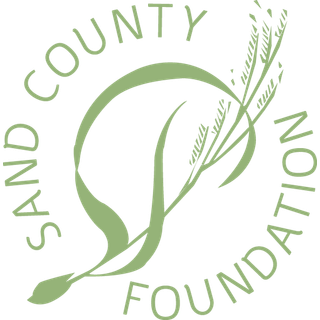Watch LeValley Ranch's Conservation Success Story
LeValley Ranch has always been managed with the long term in mind.
Thomas LeValley homesteaded a piece of land in western Colorado’s North Fork Valley in 1914. He was among the community members who created the Crawford Reservoir which held enough water to irrigate thousands of acres. Since then, his son Byron, and grandsons Mark, Hank, and Steve, have created a showcase of what can be achieved on a working cattle ranch.
Despite two decades of dry weather, the irrigation improvements and rangeland conservation practices adopted at LeValley Ranch have increased water efficiency and crop production, while enhancing rangeland biodiversity and wildlife habitat.
LeValley Ranch and the grazing land it leases from the Bureau of Land Management (BLM) is the core habitat for the satellite Crawford population of the Gunnison sage-grouse. The LeValleys have worked cooperatively with the U.S. Fish and Wildlife Service (USFWS), BLM, and a local working group since 1995 to address the needs of the threatened species. LeValley Ranch has modified its grazing rotations, reduced cattle numbers during extreme drought, and added watering areas for grouse.
The LeValleys have long known the key to maintaining their rangeland’s health is to not over graze it. Pastures on their private land in Delta and Montrose counties are not grazed for more than two weeks annually, while leased BLM and USFWS lands are only grazed every other year. Their planned grazing rotation allows time for grasses to properly regrow, and maintains enough root mass intact to grow stronger grass and forbs when moisture becomes available.
To reach distant pastures, the LeValleys installed solar panels to power large pumps that feed waterlines and storage tanks supplying drinking water to livestock, numerous bird species, and big game. With assistance from the BLM Grazing Advisory Board, the LeValleys installed 17 miles of pipeline and water tanks to service the BLM allotment in 1992. Their maintenance and expense are LeValley Ranch’s responsibility.
After taking over management of the ranch in 1987, Mark and Hank became early adopters of cooperative rangeland monitoring. An extensive testing system has documented an upward trend in range condition and species diversity at LeValley Ranch and on leased properties, including grazing land at Black Canyon of the Gunnison National Park.
A targeted grazing system helps reduce noxious fescue and bulbosa grasses. In their place, the LeValleys plant native grasses that are palatable for cattle, deer, and elk, and provide habitat for the ranch’s game bird and big game hunting business. LeValley Ranch’s cattle are only fed harvested forages from March to mid-May, which reduces costs and creates healthier soil.
To weather the ups and downs of the beef business, the LeValleys partner with five other ranches in operating a USDA-inspected custom meat packing plant and retail store. Not only does selling beef directly to consumers allow them to control the supply chain from the ranch gate to the food plate, but it also gives them the opportunity to inform others of the environmental benefits cattle ranching can have on the landscape.
Just as Thomas could have envisioned, his great-grandson Ross LeValley is stepping up to assist with the cattle, wildlife, and the working landscape at LeValley Ranch.











